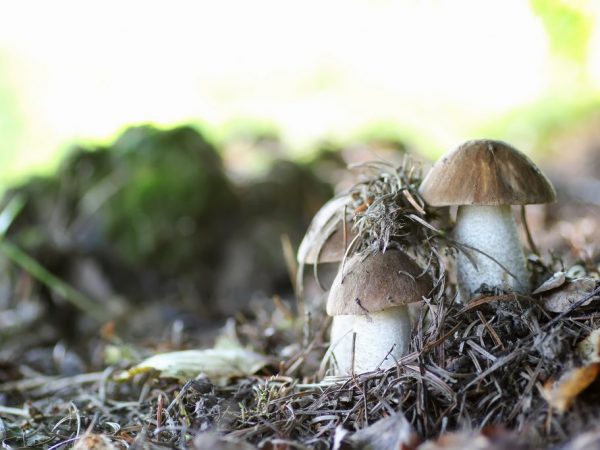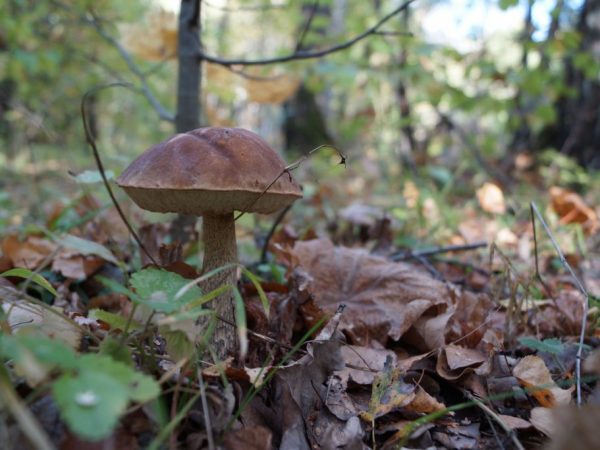Characteristics of mushrooms in Central Russia
In Russia, mushrooms grow everywhere. The total number of types of cap mushrooms (macromycetes) exceeds 2,000. Of these, almost 300 are edible mushrooms of the middle zone of our country. And all this wealth remains largely unclaimed. Some are just unfamiliar, others require additional processing. As a result, no more than 30 of the most common types fall on the table. Let's dwell on them.

Characteristics of mushrooms in Central Russia
Classification
Depending on the location of the fibers under the cap, which forms the spore-bearing layer, mushrooms are divided into lamellar (russula, champignons, umbrella mushrooms, pigs) and tubular (boletus, porcini, boletus), which are often called spongy. In the middle zone of the country, the former prevail in percentage terms - about 88% of the collected mushrooms have plates.
There is also a relatively small group of marsupials - it includes morels, truffles, which have a specific appearance and excellent taste.
And a very small group of raincoats, distinguished by a special spherical shape of white. After rain, they can be found in city parks, on lawns.
All mushrooms can be conditionally divided into several ecological and trophic groups:
- Xylophytes (includes parasitic fungi: honey fungus, tinder fungus, and saprophytes that prefer to eat rotten wood): grow on trees, shrubs;
- Soil saprophytes: morels, champignons;
- Coprophiles: umbrella mushroom, dung beetle. They like to grow on rich soils and pastures.
- Mycorrhizal (mycorrhizal formers): porcini mushrooms, mushrooms, russula. mycelium is in symbiosis with tree roots;
Irina Selyutina (Biologist):
Mycorrhiza formers, or symbiotrophs, are fungi capable of forming mycorrhiza on the roots of higher plants (trees, grasses, shrubs). As a special ecological unit, this group was singled out within the framework of mycology at the end of the 19th century. Mushrooms that are part of this group are characterized by the absence of special enzymes capable of destroying lignin and cellulose of plants and therefore are dependent on the symbiont plant. The term "mycorrhiza" (fungal root) was introduced into biology in 1885 by the German scientist A.V. Frank.
Their appearance, chemical composition and taste differ, each mushroom picker has individual and very strict preferences in this regard.
The nutritional value
Mushrooms contain a large amount of protein, are rich in minerals, the energy value of porcini mushrooms is over 938 kJ, they contain vitamins and organic acids. In short, mushrooms are a storehouse of nutrients. But it should be remembered that mushrooms are difficult to digest, and people with chronic diseases should use them with caution.
Mushrooms contain a lot of amino acids and trace elements, which makes them an indispensable ingredient in the preparation of all kinds of dishes.
Fresh mushrooms, salted, dried, pickled - the mere mention of them gives rise to appetite. In Russia, there is a tradition - by all means put mushrooms on the festive table, during the fast they successfully replace meat.Therefore, with the onset of the season, a huge number of mushroom pickers rush to "quiet hunting".
Mushroom season
It begins immediately after the first thawed patches appear in the snow. Morels and lines are the first spring mushrooms. They grow on forest edges, on the slopes of ravines, in the field. Outwardly, they resemble the brain, but only brown in color. They are conditionally edible, they require preliminary cooking before cooking. Delicious and aromatic.

The first mushrooms may appear at the end of May
Each mushroom picker has their own cherished gathering places and their own calendar of their visits.
The first: white, boletus and boletus may appear in spring (at the end of May, June). They grow in clearings, in a young mixed forest, often found along forest paths. The first wave of fruiting usually does not exceed a week.
Starting in mid-July, when there is enough rain, the most common edible mushrooms begin to grow massively:
- Borovik, he is white: the brown cap sits tightly on a strong pear-shaped leg. It has a tubular structure of white or yellow-green color (depending on age).
- Boletus, aka boletus: gray or gray-brown cap on a leg covered with small gray scales. The structure under the cap is tubular, light in young mushrooms and gray in old mushrooms.
- Boletus: outwardly similar to boletus, only the cap is red and turns blue at the cut point. Grows in a mixed forest. It is also called "obabok".
- Butterlets: love the sandy soil of coniferous (especially young) forests, have a brown slippery cap, and a light leg. Quite often they grow in groups.
- Ryzhiki: the name speaks for itself. The funnel-shaped cap has a lamellar structure, one bright red color with a stem. It is very fragile and fragrant.
- Honey mushrooms: there are summer, winter, meadow. May vary in color (depending on the species) but always grow in colony. The edible mushroom has a characteristic ring on the leg and scales. By these signs, it is easy to distinguish it from a poisonous false mushroom.
- Chanterelles: yellow, funnel-shaped, irregularly shaped cap smoothly passes into the leg. The pulp is firm, never wormy.
- Milk mushrooms: there are white, black. Their dense flesh is best suited for pickling. At the site of the cut, milky juice is released. Before salting, they are soaked for several days in salted water to remove bitterness.
- Russula: the most numerous representatives of the mushroom world of central Russia. The color range of hats ranges from bright red to white. There are green, bluish, pink. Inexperienced mushroom pickers often confuse russula with pale toadstool, due to the similarity in the description.
- Mushroom umbrella: grows in humus-rich meadows, in places of grazing, in the forest. It is not particularly popular in Russia, but in vain. Some specimens of this delicious mushroom reach 40 cm in height, the cap can grow up to 35 cm in diameter. It really looks like an umbrella. They eat only the hat, the leg is too hard. It can be easily confused with poisonous counterparts.
Irina Selyutina (Biologist):
Umbrella mushrooms are saprophytes and inhabit the soil both in the forest and beyond. Although they are not mycorrhizal organisms, they are found regularly in the same place from year to year. Although they are all edible, some members of the genus are highly prized in the markets of Europe, Asia and Africa, especially the variegated umbrella mushroom.
Macrolepiots (umbrellas) are cosmopolitan and are distributed almost all over the globe. The best studied species are the northern temperate zone.
According to the description, mid-August is the peak of the season. From this time until the very frost, late mushrooms grow by leaps and bounds. Tubular - faster, lamellar - a little slower. But baskets are filled very quickly. And mushroom hunting pleases with trophies both professionals in this business and amateurs.
Precautions
Even the safest mushroom can become poisonous if it grows near a busy road, next to a landfill, or in a place with soil contaminated with hazardous waste. When collecting, be sure to take this into account.
Do not pick overripe or wormy mushrooms. It is strictly forbidden to take a mushroom if there is even the slightest doubt about its edibility.
Every good mushroom has a poisonous counterpart, the consequences of inexperience or inattention can be catastrophic.
Be aware that even the pale toadstool spores are extremely poisonous and can ruin a basket of mushrooms that have been harvested.
Going to the forest, you can take with you reference books describing edible mushrooms, but if in doubt, it is better to leave the mushroom - let it grow further.


